At first sight, the bright colours of artist Sam Owen Hull’s abstract artworks might suggest a pop art style of imagery. While advertising imagery is one of the inspirations she takes from everyday life, unlike the mechanically rendered techniques of pop art, this work is all from the artist’s own hand and has a deeper meaning.
Sam’s art aims to convey the tension between opposing states that are inherent in the human condition. Using collaged materials such as paintskins along with matte, satin and metallic threads she expresses this with gestural marks, colour and light in her abstract painted and stitched works.
Sam’s style is bright, colourful, contemporary and observational, and is a lively way of conveying the contrasts we all experience. And she offers a challenge – she leaves her work untitled so that you decide its message.
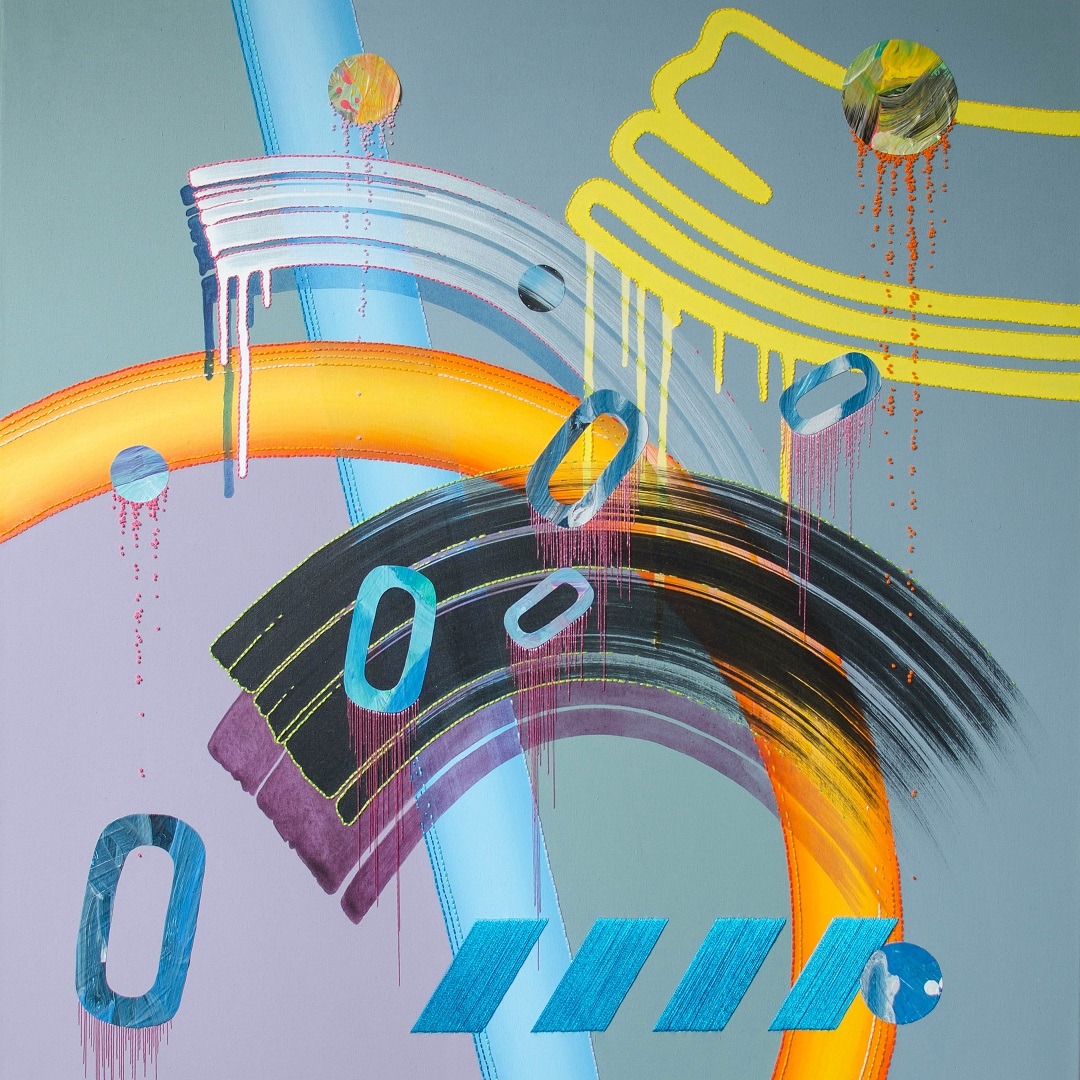
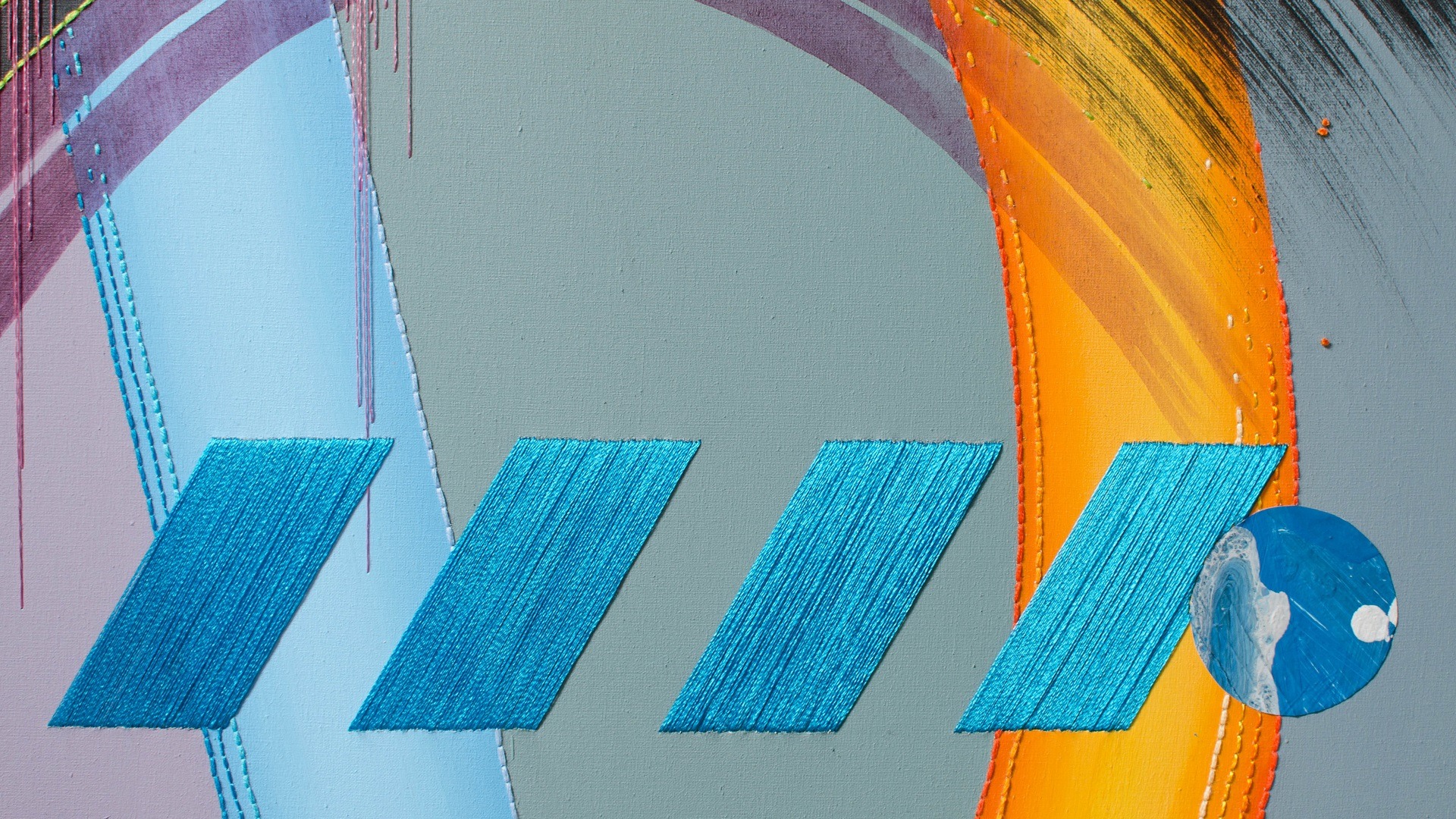
Thread of life
‘What drew me to textiles is the connection with the fabrics that run through all our lives, with a line (of thread) running through, connecting myriad disparate elements. I decided when I started working with thread that I would limit my tendencies to expand into other materials and focus on the elements that make a traditional painting – cotton, canvas, wood, nails, staples, paint. From those limitations, I can take apart and reconstruct painting to really explore what it can be, and what it can mean to me.
‘When I did my fine art degree in Manchester in the mid nineties, I started in painting and ended up in the sculpture school – my work has always sat between disciplines and my interest in the spaces between opposing polarities continues to define my practice.
‘My mum and auntie were keen knitters and stitchers, and both had encouraged me to learn and develop those skills. Although I wasn’t so great at knitting! Craft had a strong presence and I spent most of my time drawing or making things as a child.
‘As a teenager, I started to make clothes with lots of help from my mum and auntie, and I customised charity shop finds. I discovered painting when my art teacher let me use some oil paints and palette knives in high school and persuaded me that I could pursue art as a career. She opened up a route for me that I couldn’t have imagined, and without her intervention, I don’t think I’d be working as an artist today.
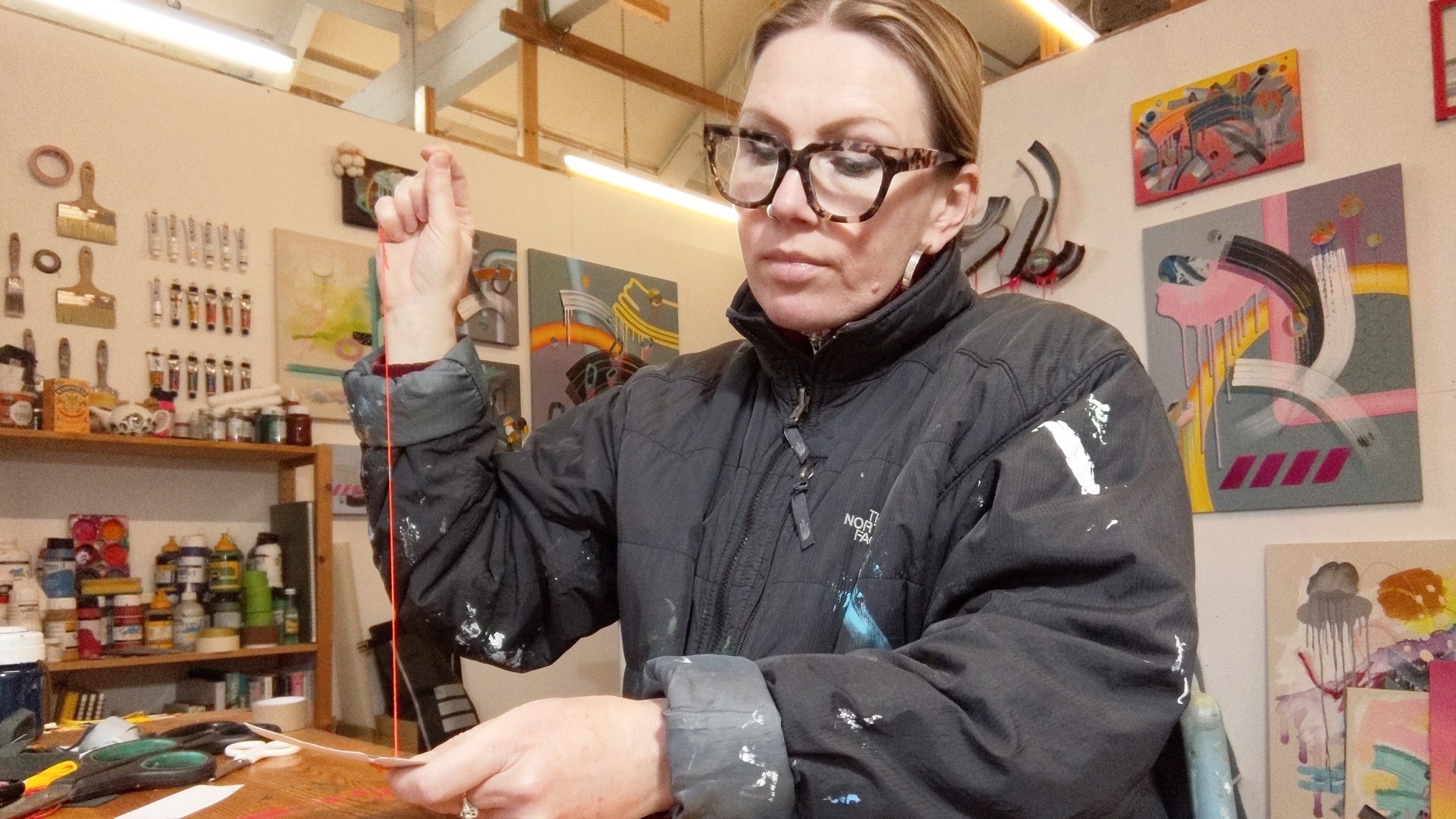
From brush to needle
‘Although I’ve always made art since finishing my degree, my developing practice was on hold for a while as I had my children. I started stitching again as a result of motherhood – the demands on my time meant that I found painting difficult, but I really needed to do something creative to keep a connection with that part of myself.
‘I started making things out of my children’s old clothes, eventually settling on embroidery. It was perfect: small and portable; it could be done in whatever time I had available. It was also nice to stitch around my children, it connected me to my own past.
‘When I returned to painting, I quickly realised that the canvas I was painting on was like the calico I had been embroidering, and I decided to combine the two.
‘I really liked the speed and freedom of gestural, painterly marks against the slow precision of hand stitching.’
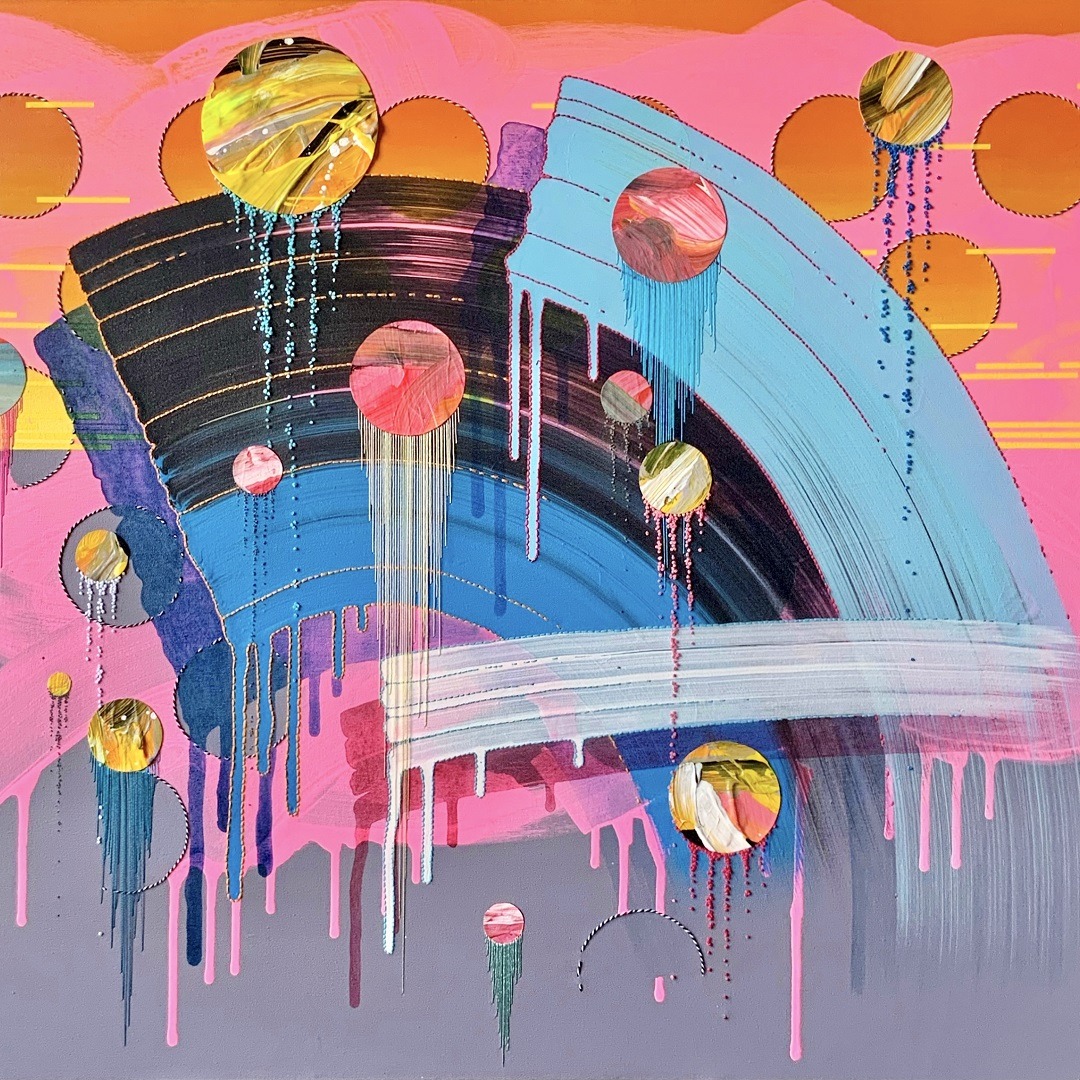
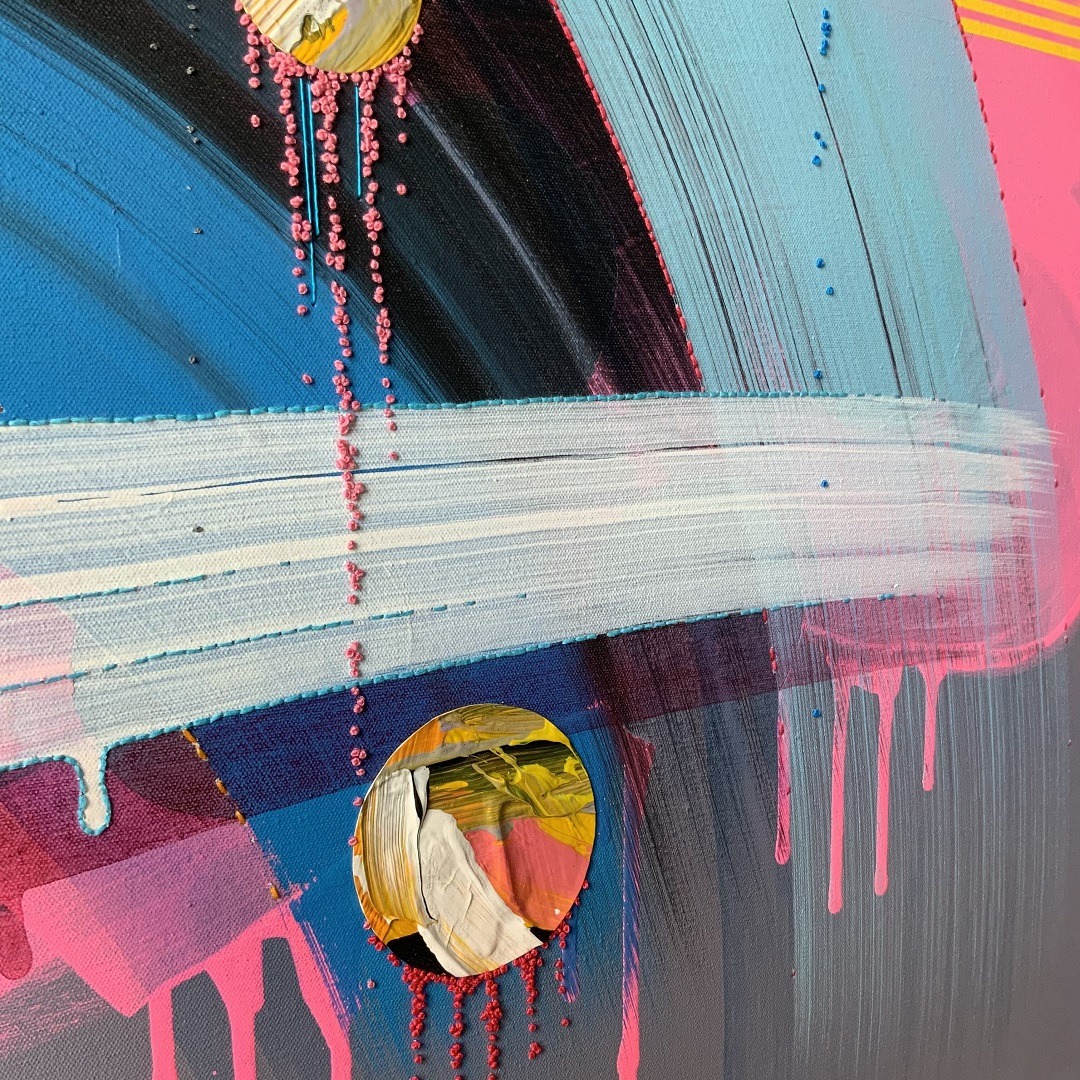
Choosing materials
‘I can be a bit of a magpie when I make my work and have previously used a huge range of materials. For me, all materials have a language, all objects have meaning, which has led me into using all sorts of things, from jelly to tin cans.
‘I like to use a variety of threads from very cheap cotton thread that is very matte through to lovely mercerised DMC cotton and DMC satin rayon. These give a broad range of light effects.
‘Sometimes I work on canvas, sometimes on calico. I use acrylic paints as they dry quickly. I use cheaper paints for larger, more experimental painting and making paintskins, and higher quality paints for more specific areas and upper layers of my work. Works on watercolour paper could be with watercolour paints, acrylic inks or paints.
‘I might use acrylic markers, graphite sticks or charcoal for mark making too. I like to use whatever I think will do the job required, even if it’s being used in an unconventional way. I try to buy materials locally and re-use as much as possible.
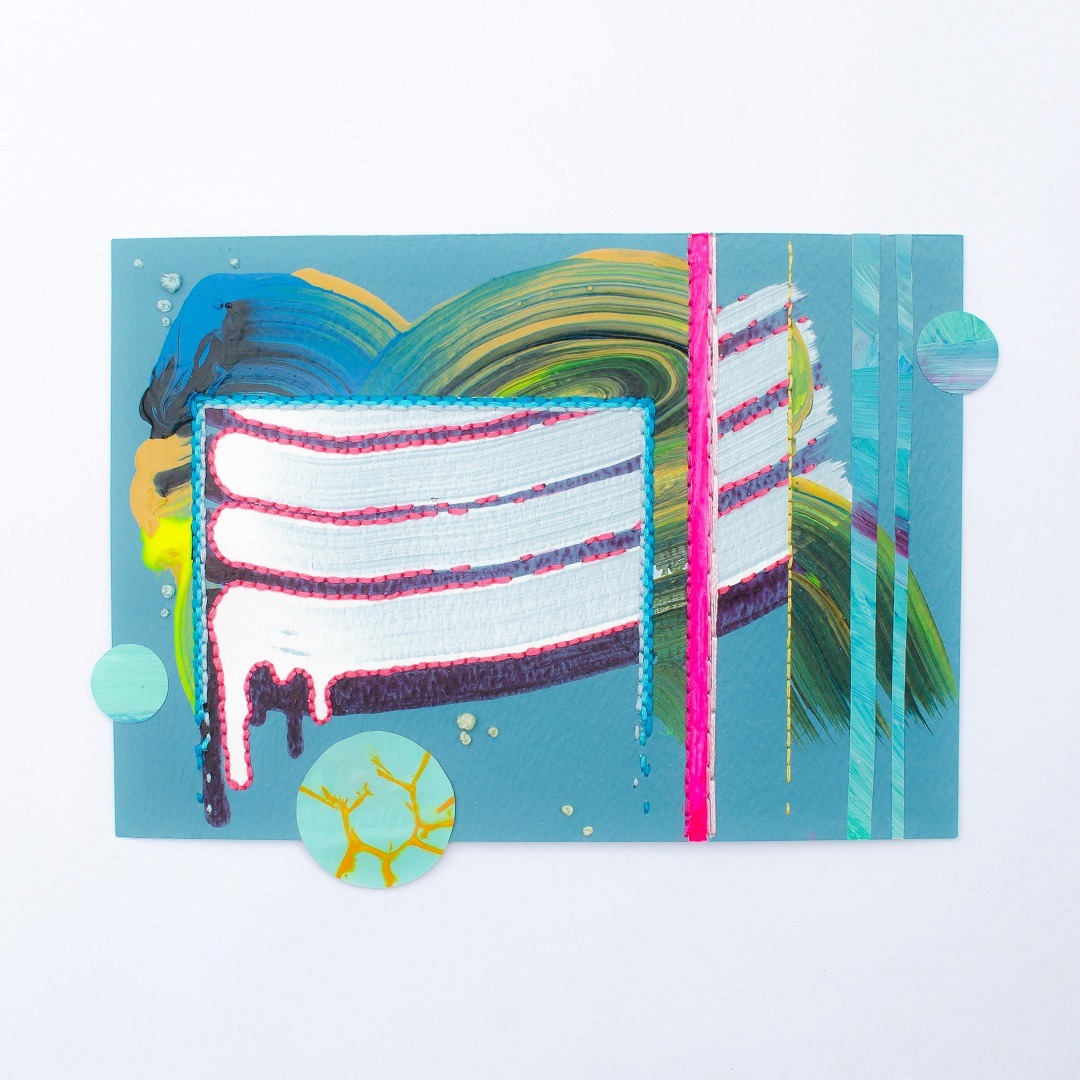
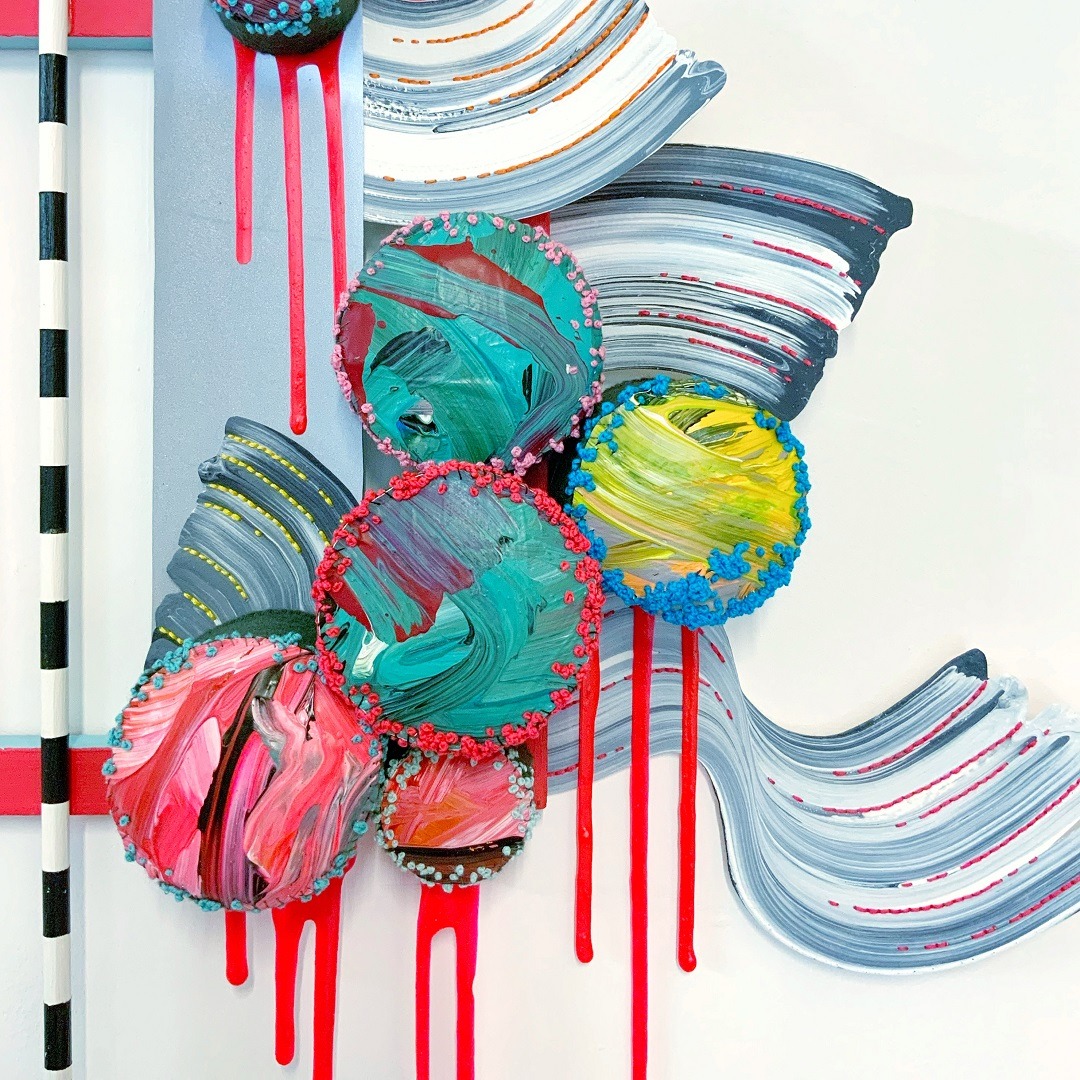
Layers and depth
‘My process starts with a loose plan and ends quite intuitively. I get my inspiration from observing polarities in my everyday life – a fleeting light effect, dissolving double yellow lines, trees illuminated glowing green against a dark grey sky, lichens growing over decaying graffiti. I take lots of photos and use these as starting points for my paintings.
‘My gestural brushstrokes over time have become more contrived. They’re more like a sign than a gesture, and, as I’ve developed my work, I’ve experimented with different paint textures and thicknesses in combination with stitch. I like to use collage on the surface of my work too, which kind of enlarges the marks added with stitch and adds layers and further depth, but also gives me the opportunity to hide some areas!
‘It can be quite terrifying stitching through larger works, especially if I’ve invested a lot of hours in the piece – once the holes are there, they can’t be reversed.’
‘At a certain point in each work, my process becomes intuitive, and creating a tension or balance becomes a conversation within the composition itself. The work usually brings itself to a conclusion.
‘Most recently I have been investigating paint as a material to collage, creating a tension between paint as a drawing medium to create illusions of space and paint as a material in its own right.
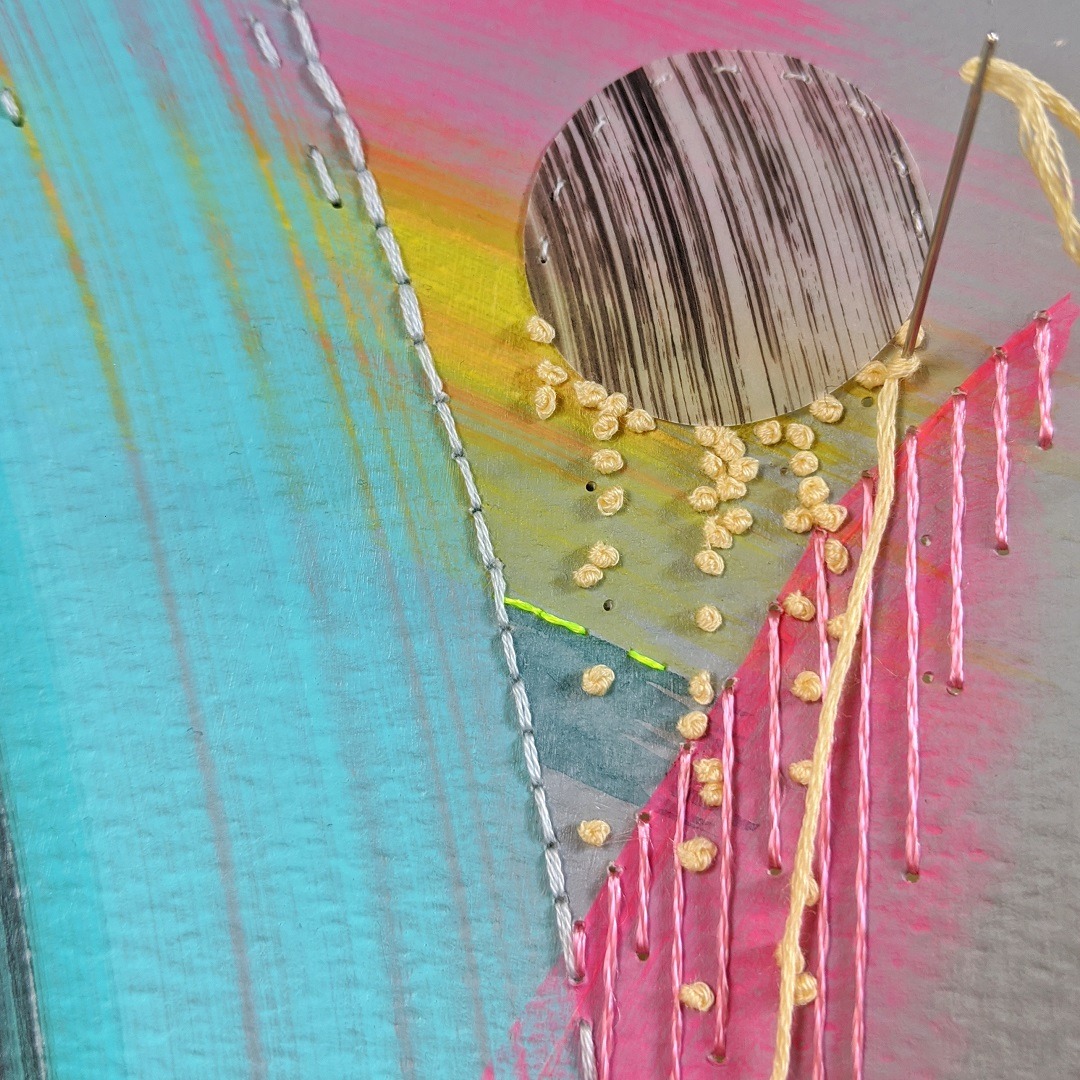
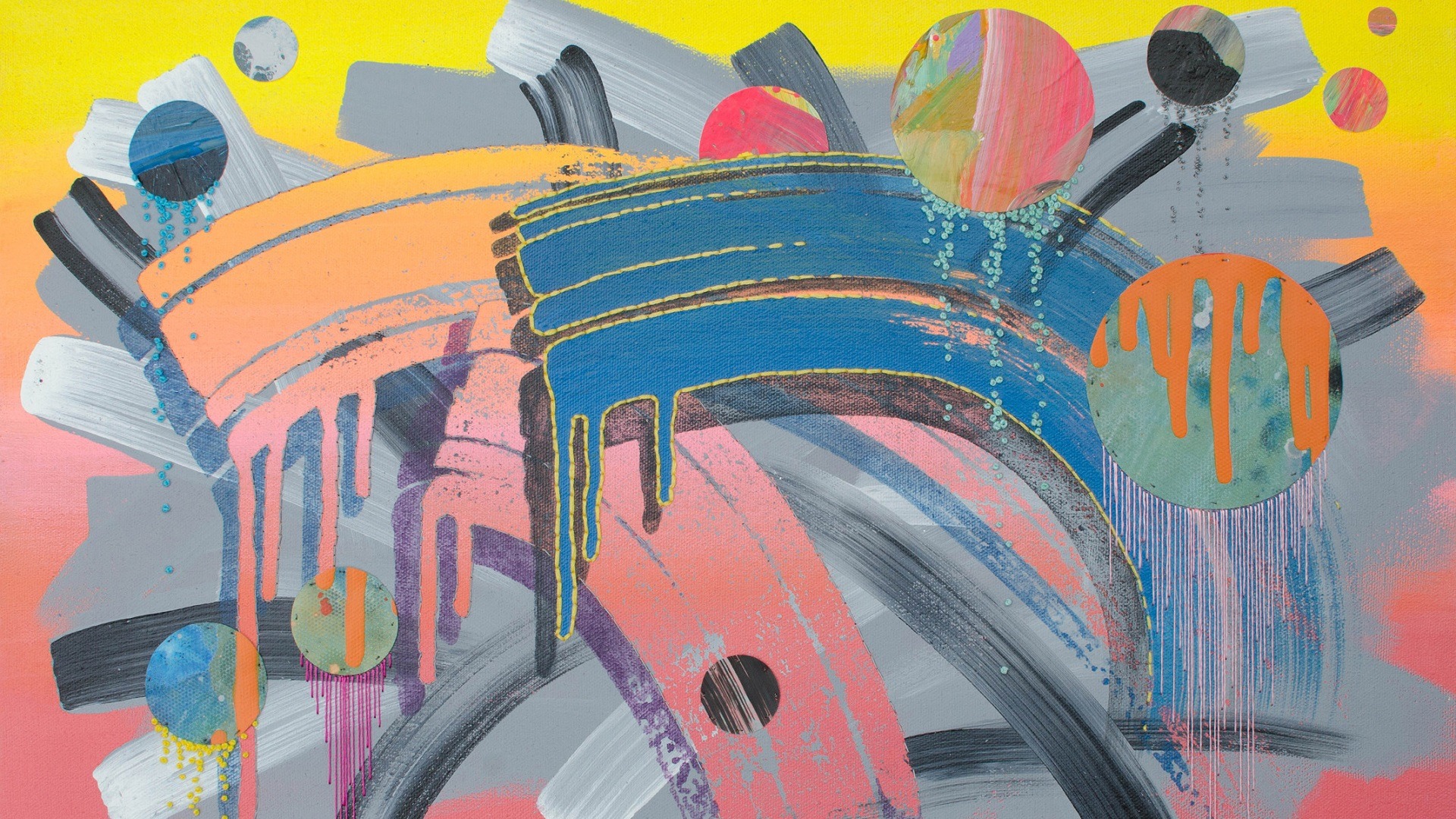
Adding stitch and collage
‘Usually, I start stitching around the outside of some of the lines or brushstrokes. The interaction of the colours there leads me into the next decisions I make about where I might place more stitching and what colours would balance or pop in the composition. I might add broader areas of satin stitch and vary the direction of the stitch to reflect light in different ways. I often add French knots kind of dripping down from collaged elements; this references lichen that grows over decaying surfaces.
‘I mostly use backstitch, satin stitch and French knots as they are reminiscent of the marks I might make when drawing. I sometimes use bullion stitch, which has huge texture but is still within the realms of line for me. The amount of stitching I add is usually directed by what the composition appears to need in order to resolve itself. Even if I try to keep it minimal at the outset, it rarely ends up that way.
‘The collaged elements that I use are usually painted paper (I quite like tracing paper), canvases that I didn’t like enough to continue working on, or paintskins. The paper and canvas elements will be areas of other abandoned paintings that I particularly like, and they are usually stitched onto the canvas.
‘Paintskins are dried sheets of paint layered and peeled from a shiny surface, and these are usually glued onto the canvas. Part of this way of working comes from wanting to re-use as much as I can instead of discarding paint and abandoned work.
‘But I also want to explore what painting is and can be, for example, using paint to create illusions of space against the solidity of paintskin as a material in its own right. Similarly, the thread on the surface connects with the warp and weft of the canvas ground that is usually hidden beneath the paint and makes that part of the structure of the painting tangible.
Abstract opposing polarities
‘All my art is now abstract, and my drive to make it comes from a desire to resolve, or at least grasp, a fleeting understanding of some of the complexities of our human condition. Some of that is very personal, and some relates more broadly to my experience of the world.
‘I develop my ideas from observations, so there are sometimes recognisable elements, but generally, I like to keep my pieces as abstract as possible. My titles are reference numbers to avoid directing the viewer.
‘My work has always been about in-betweenness – looking for the tension or balance between opposing states – and our desire for freedom against our need for security and comfort has always been pretty central. I’m interested in borders, edges and systems that contain and direct us. The visual language of our environment, such as signs or advertising, have a strong influence. I’m interested in our complicated relationship with nature, as a part of it, but also destroyers of it. The polarities of life and death, light and shadow, growth and decay, presence and absence are also central themes.
‘The discovery of embroidery thread in various finishes has allowed light to become something intrinsic to the surface, in contrast with the illusion of painted light and shadow. ‘
‘The point at which painting meets sculpture is also fascinating and I enjoy being able to build constructions on the surface of paintings. I use cotton that would normally be hidden as the ground for the paint – again, playing with light effects.
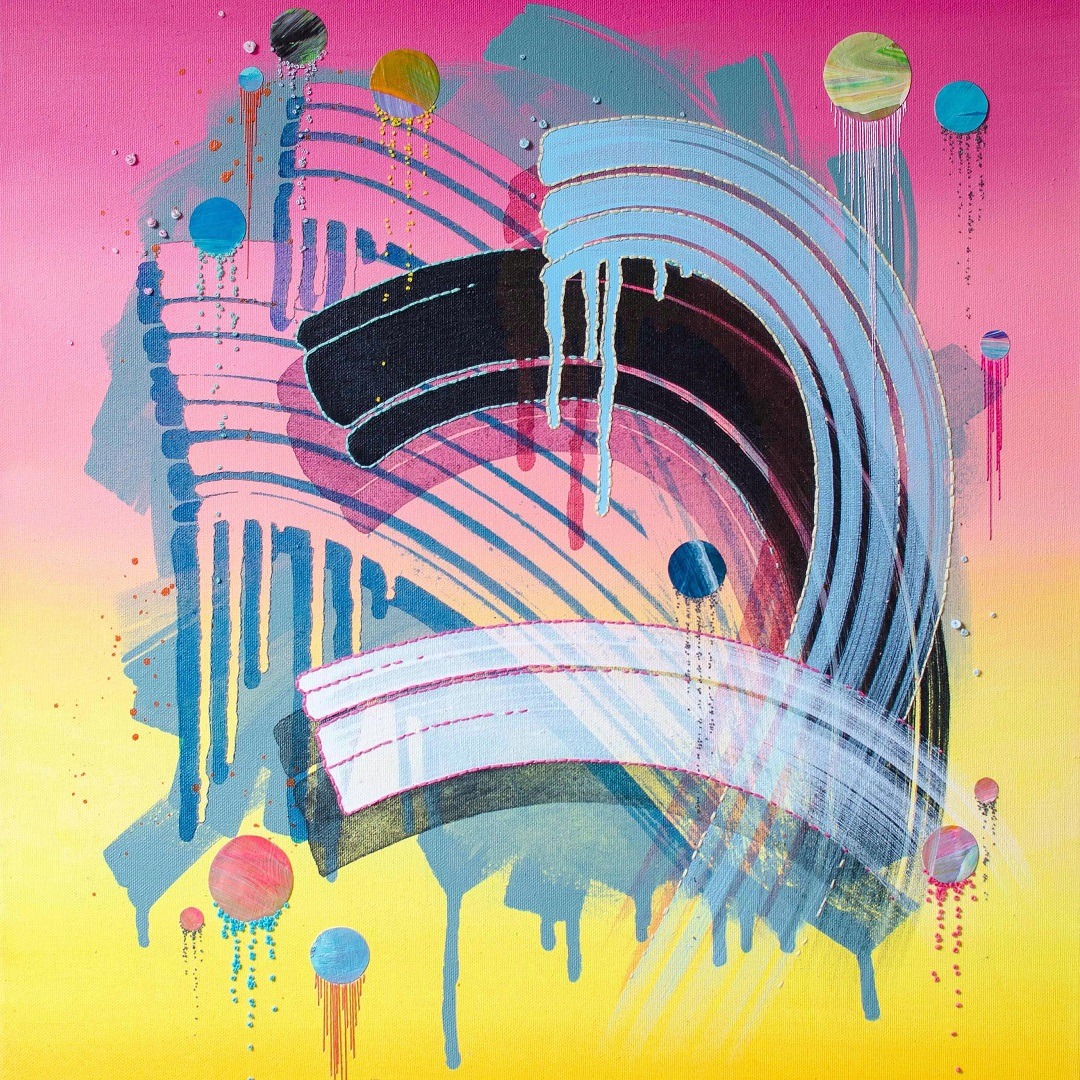
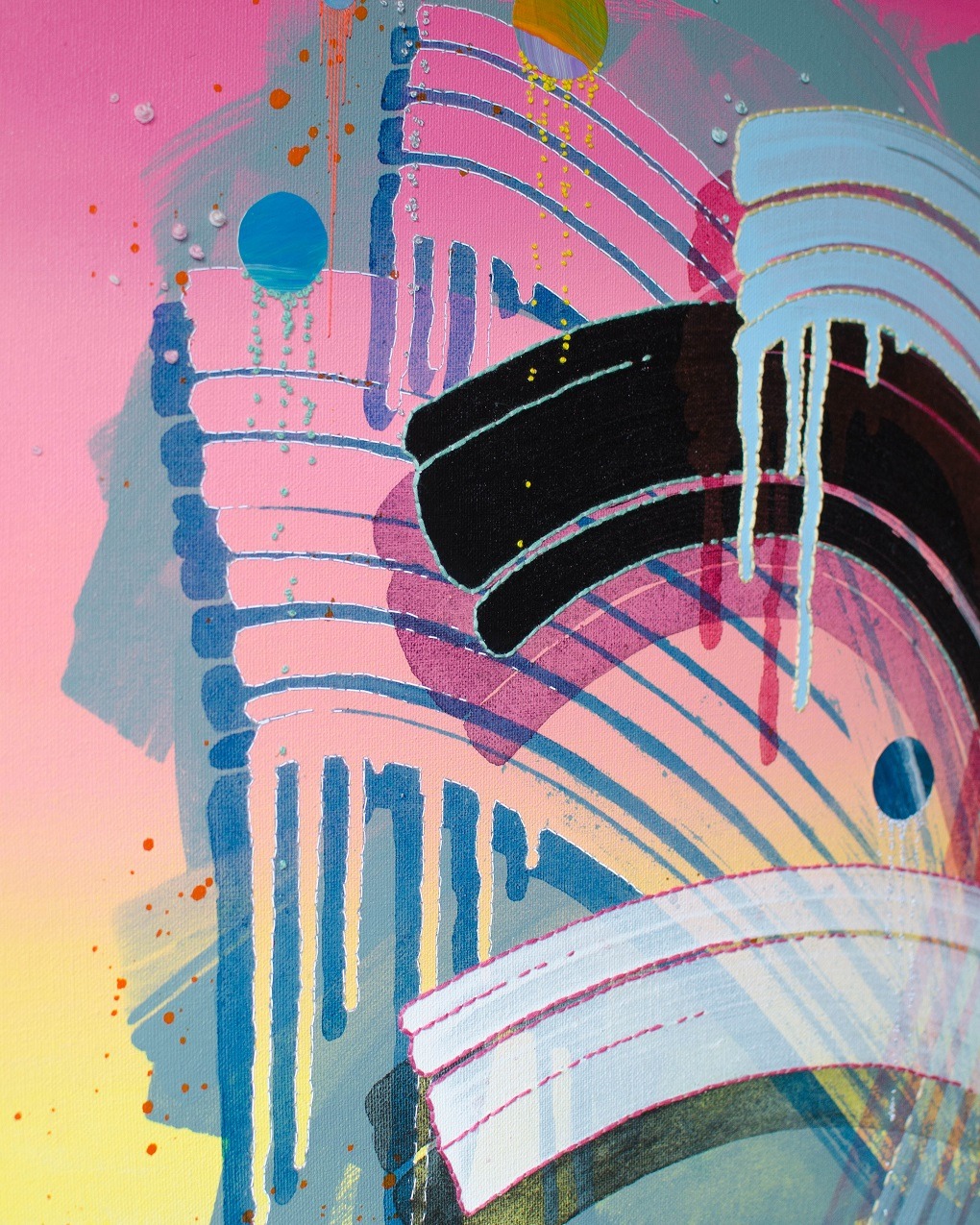
Carving out time
‘My working week is always different – as a freelancer I have very irregular working patterns. It’s never dull! So I spend as much time as I can in my studio around other programmed, paid work. I aim for two to three days a week in my studio but it really is dependent on my workload, some weeks it may be half an hour. I usually have a half day each week to get on top of any admin that needs attention.
‘Although I find it harder to work in short bursts, my way to overcome that is to commit to making some work every day, even if it’s just 10 minutes. And the chances are, it’ll become longer wherever possible.’
‘I usually have multiple works on the go to stop me from getting stuck or bored, but also so that I have smaller works finishing reasonably regularly. And there’s always something ready to go for my 10 minutes of making if that’s all I have. Some of my larger works take a very long time and it helps motivate me to have some things reaching the finish line during work on those.
‘I try not to give myself a hard time for making slow progress. I’m a working mum and I do what I can with what is ultimately a deliberately slow way of working. Instagram can be tough for making me feel like I need to produce more – and faster!
‘Sometimes I might need time to be alone, rest, visit some exhibitions, chat to fellow artists, let my mind wander and create new connections so that my studio time can be rich and useful, rather than forced. So I guess my advice is to do what you can, when you can, and try to do a little every day, even if it’s 10 minutes. But never give yourself a hard time about any of it!
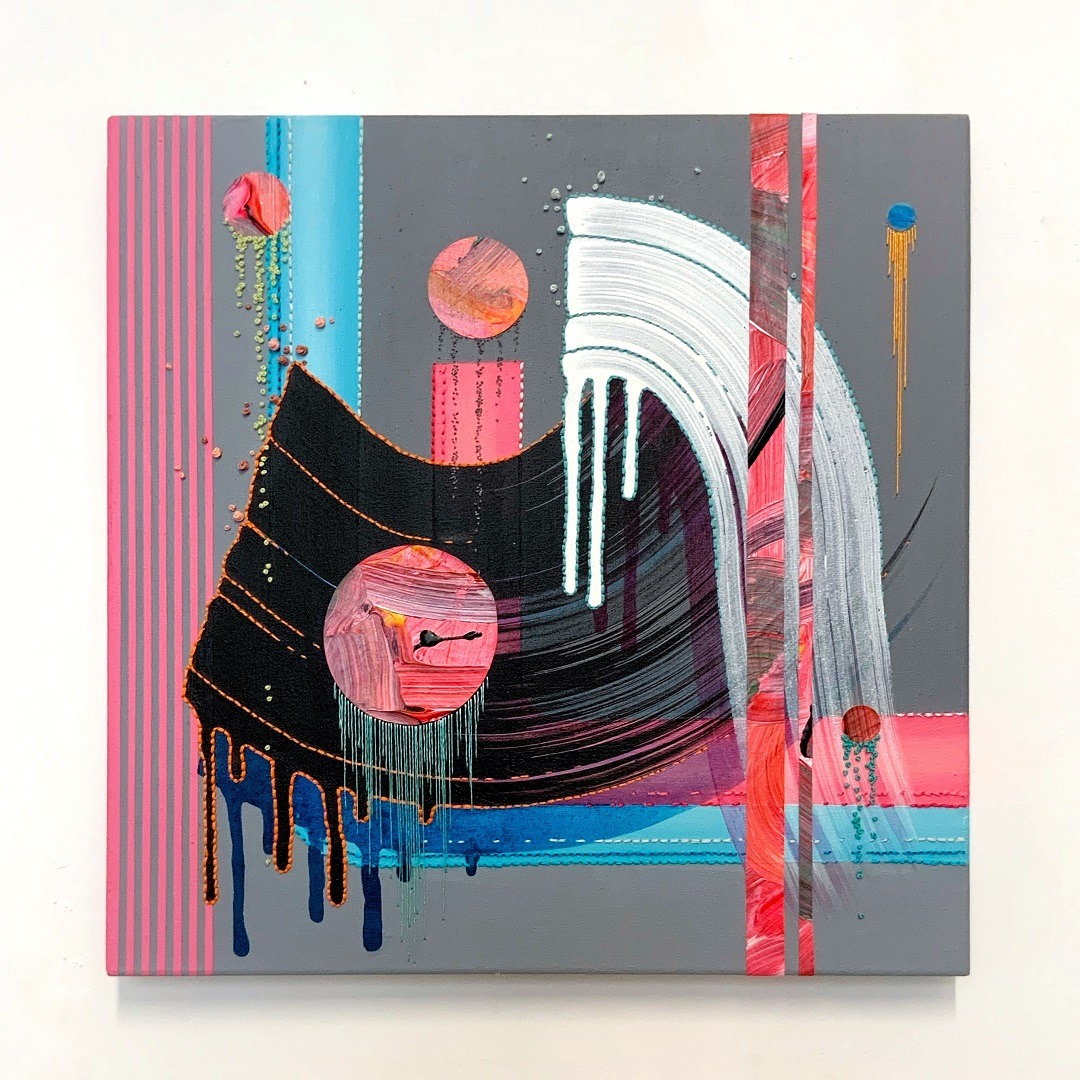
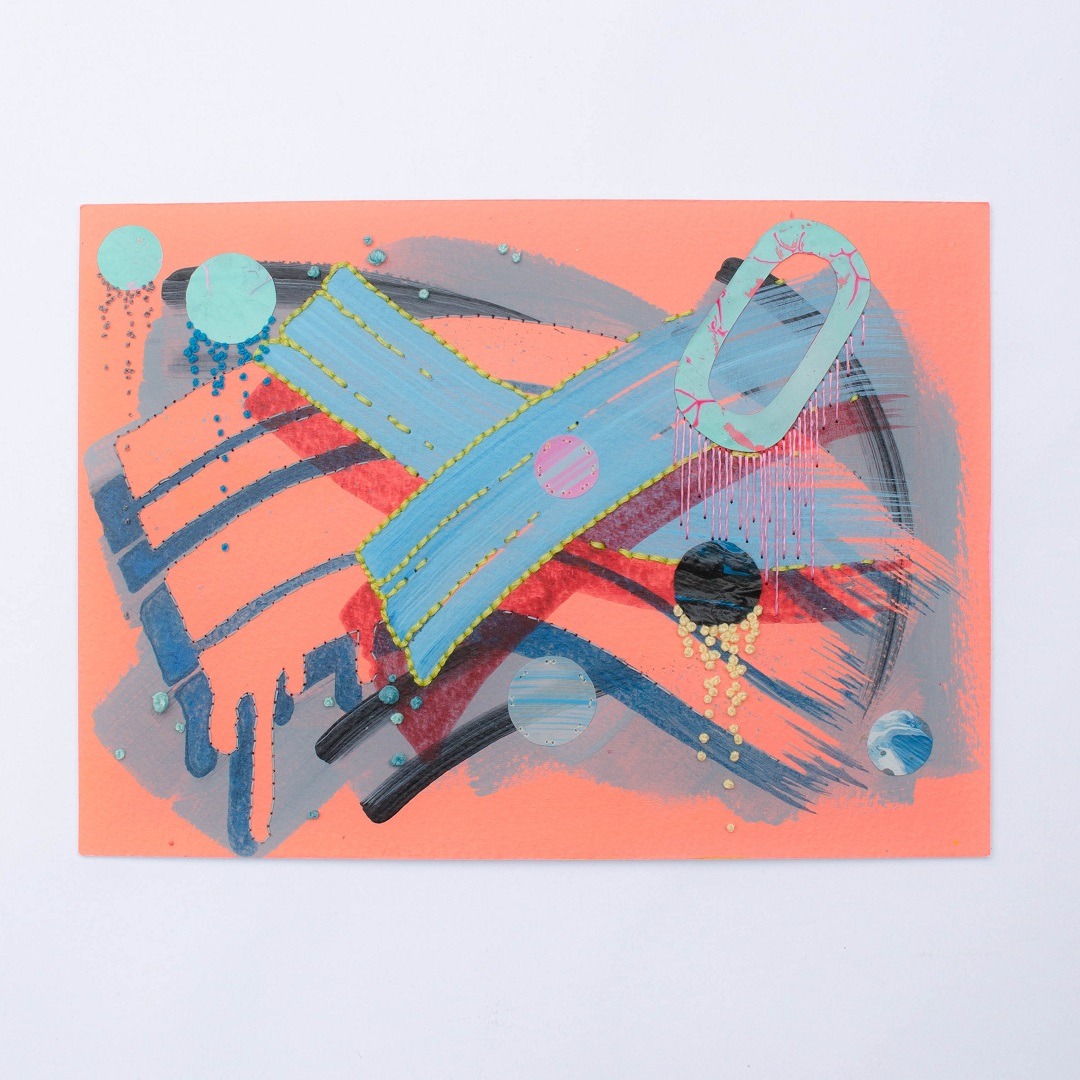
Sparking imagination
‘The advice I give to all aspiring artists, of any age, is to play. Give yourself time and space to create without pressure, with a variety of mediums and processes, and closely observe what you come up with. It will slowly tell you what you like, what you don’t like, where your interests lie, and where they could take you.
‘I think because I work in a huge range of ways with a huge range of people in workshops, I get to do a lot of playing outside of my own art practice, and it often feeds back into my work in surprising ways. For every finished, highly revered work you see in a gallery, there are thousands of hours of unseen work behind it – failed experiments, accidental discoveries, blind alleys. It’s all important. Having confidence in myself, and embracing mistakes and failures has really helped to move my work forwards.
‘Alongside playing, I’d recommend visiting galleries and exhibitions, getting to know art history. Look out for new artists on Instagram – finding out about other artists’ work will spark your imagination.’
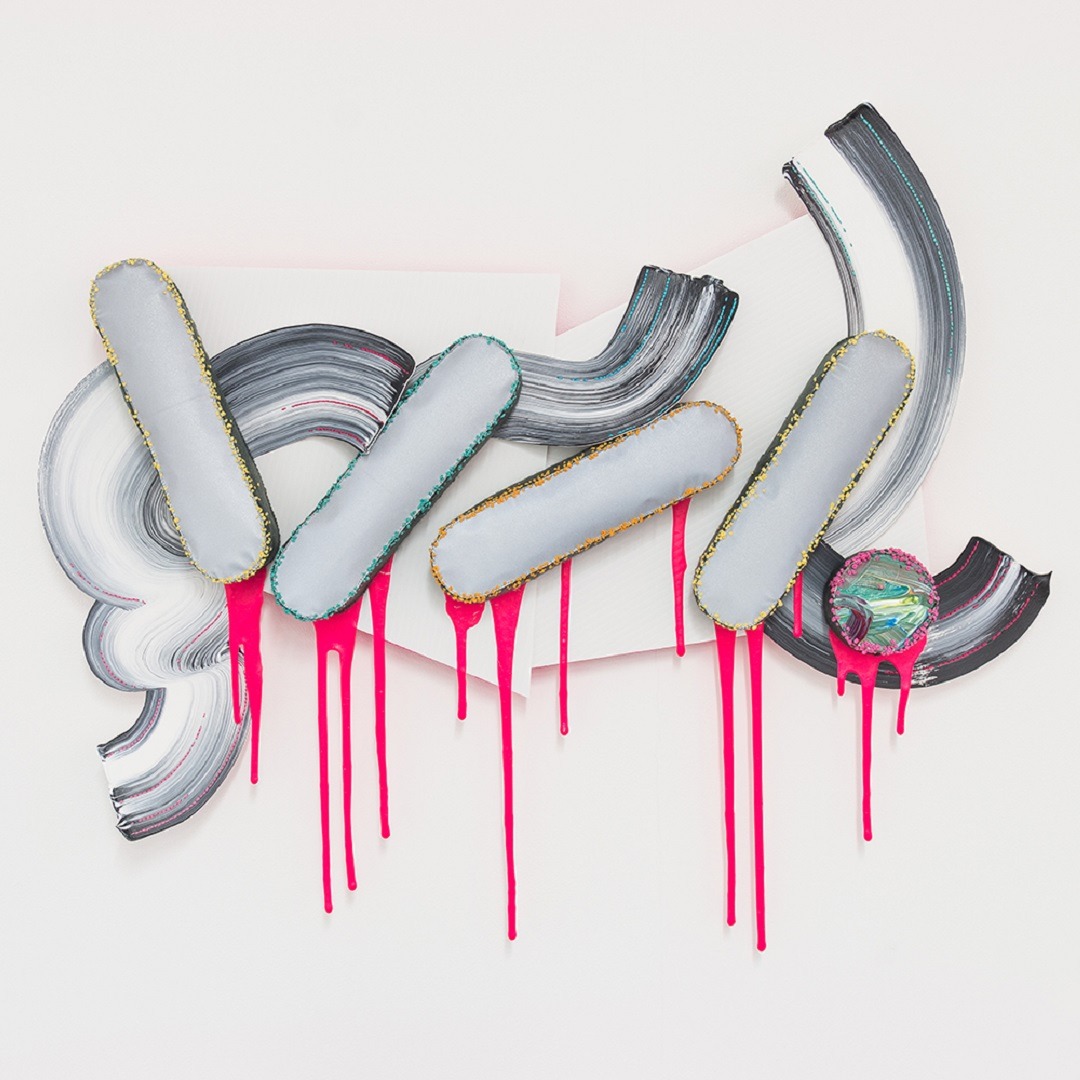
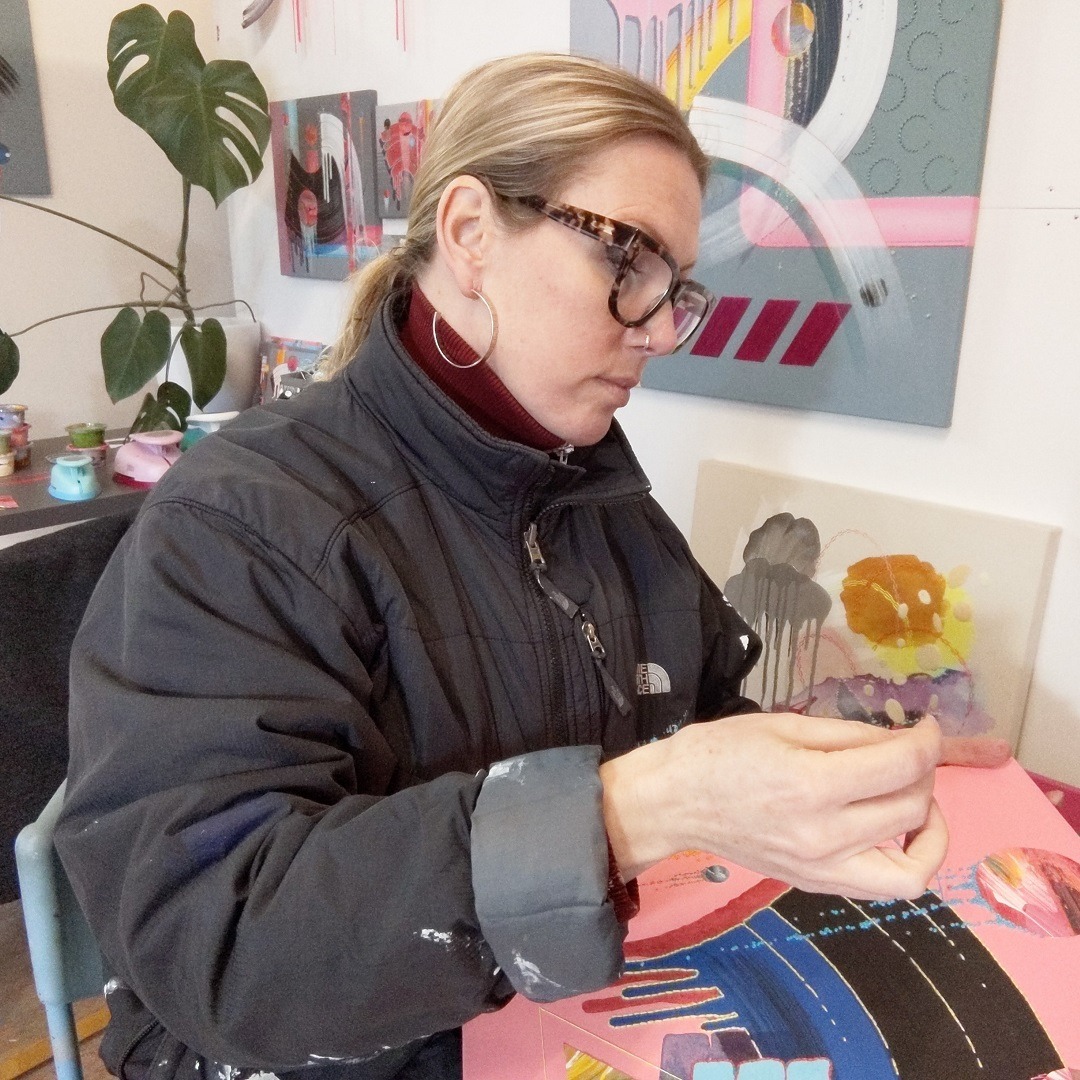
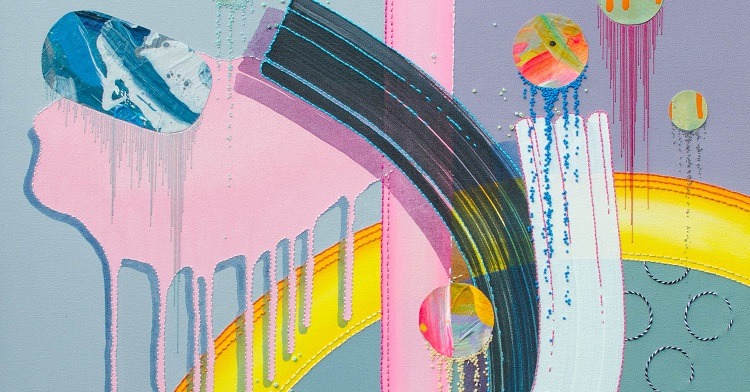

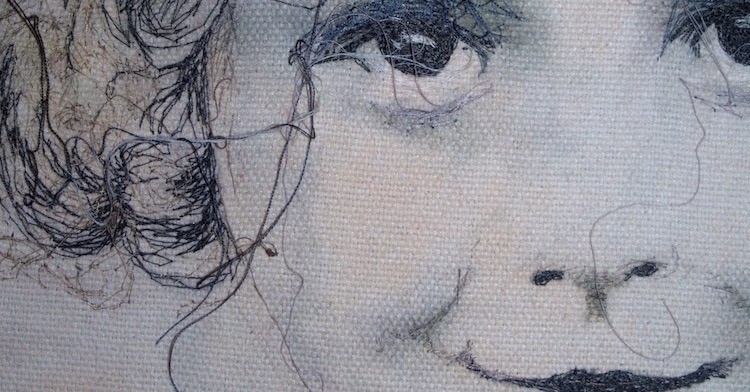
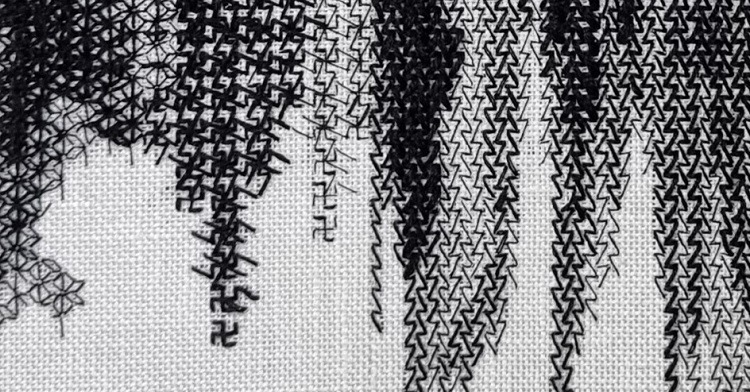
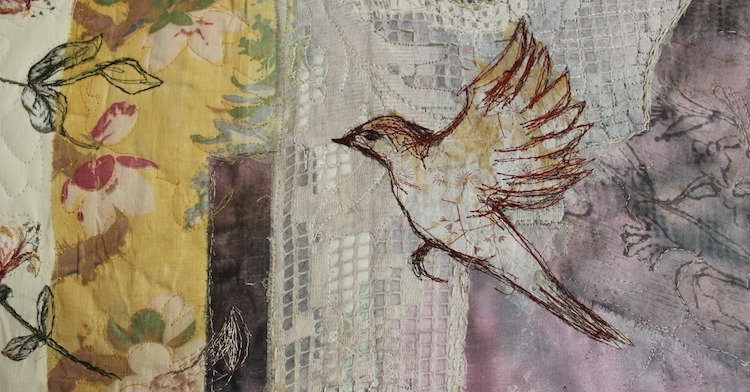
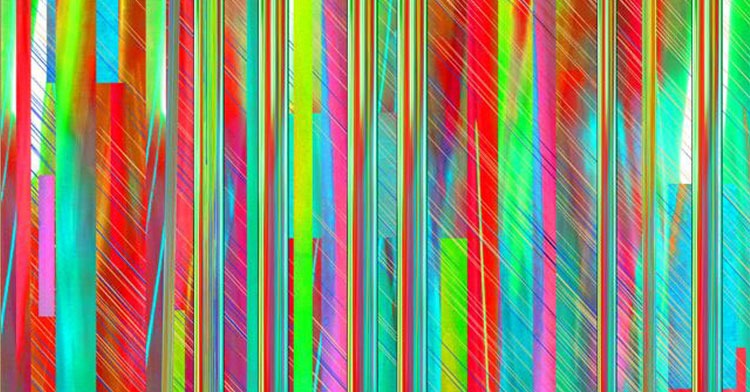
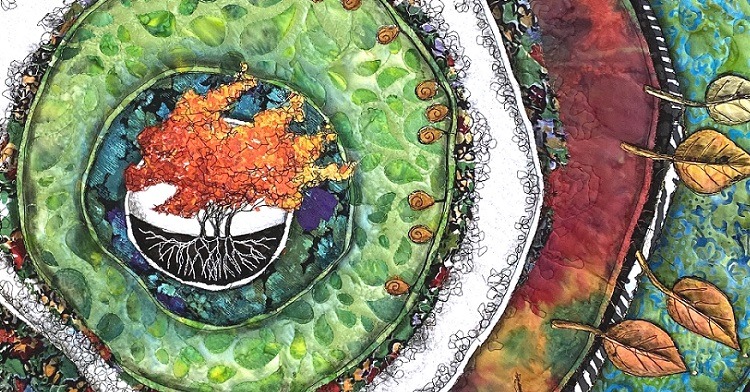
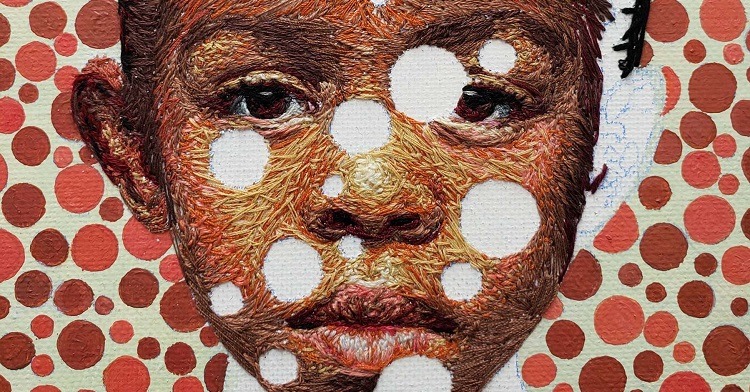
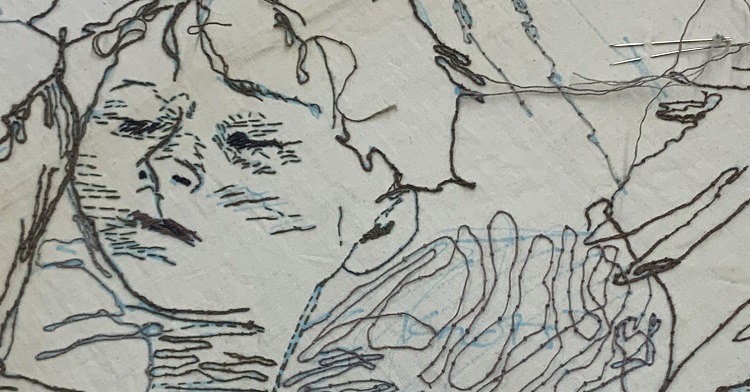
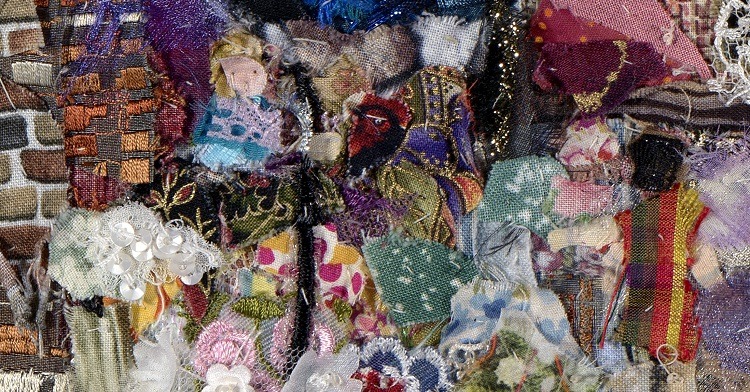
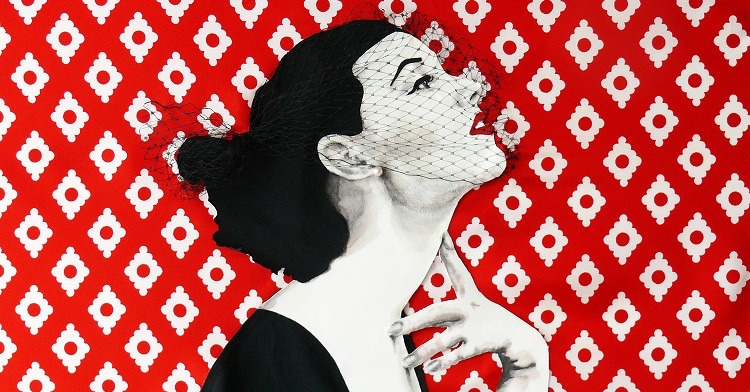
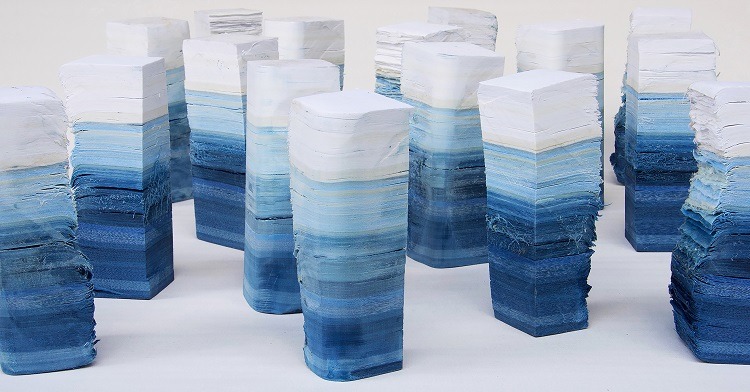
2 comments
Sistem Informasi
convey tension
Linda Carswell
I love her use of vibrant colours and combination of paint and stitch. It is encouraging to have her reminder to play and not be too concerned about outcomes. Even 10 minutes a day is better than nothing!